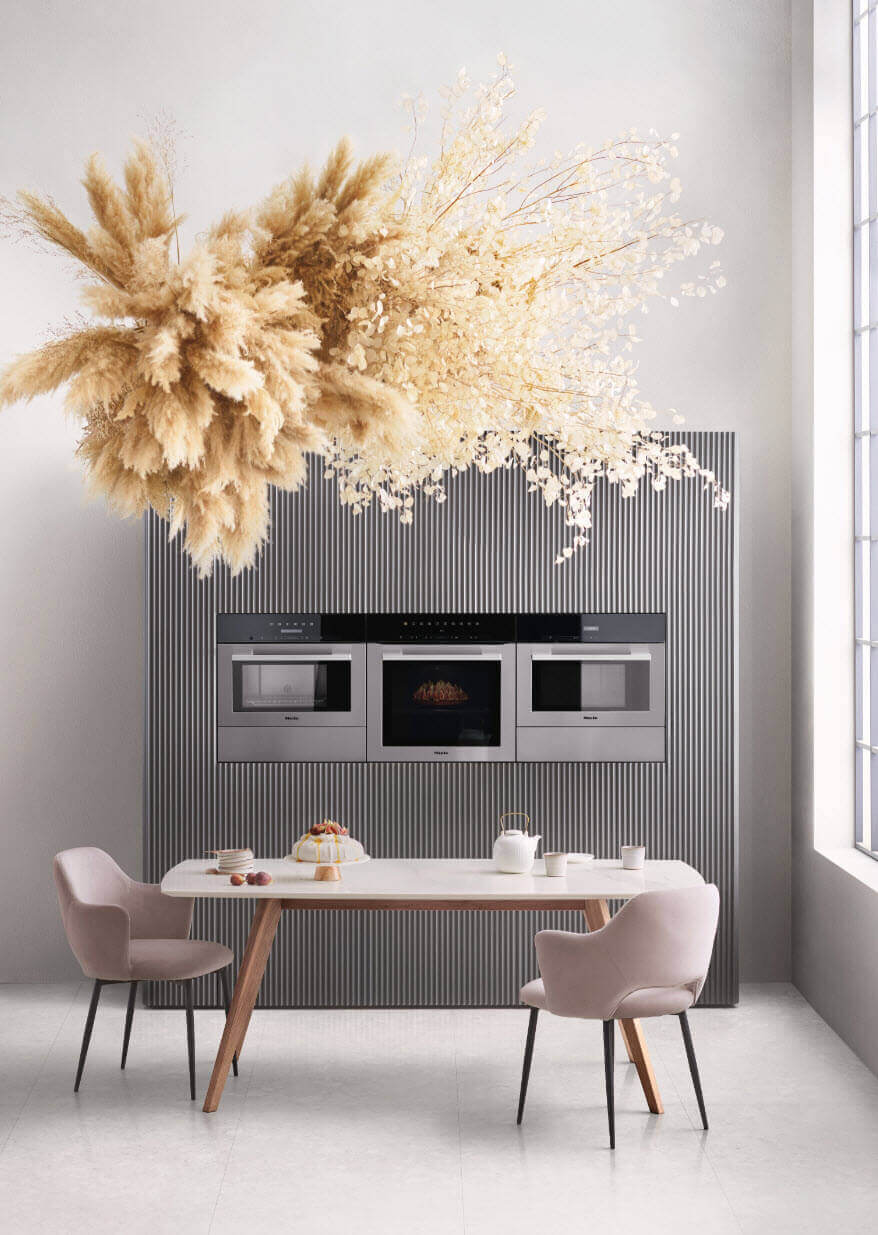How to incorporate more native superfoods into your diet
Australia’s Indigenous communities have made use of all that these lands have to offer for traditional dishes and medicines for over 60,000 years. As part of Miele’s new Stories of Sustainability series, we travelled to the Northern Territory to learn firsthand from Daniel Motlop, General Manager of Something Wild and Seven Seasons Aboriginal-owned food and beverage companies at the forefront of supplying Indigenous food to restaurants and consumers around Australia, and the world.

Hearing stories of tradition, culture and living a sustainable life, we are reminded of how important it is to incorporate more native produce in our cooking:
“My hopes are that the current trend spotlighting Indigenous food will help build a sustainable industry that is respectful and beneficial to Aboriginal communities & traditional landowners.” – Daniel Motlop
With the stunning surrounds of the Northern Territory as our backdrop, we learn how to bring to life a delicious recipe for Barramundi cooked in paper bark with green ants, which have been favoured by Indigenous societies for thousands of years for their medicinal benefits and protein content. Hand harvested by the Motlop family, proud Larrakia people, we even learn more about their award-winning Green Ant Gin. Let’s dive in!
Bush tucker at its best
Over the last decade, chefs and consumers alike have come to better understand the value of sourcing local sustainable produce for its myriad benefits including freshness, lesser environmental impact, reduced food miles, support of local farmers and economies, as well as the added uniqueness of something you can’t get elsewhere.
While this country has a long way to go in terms of reconciliation and justice for First Nations people, one pleasing development has been the increasing availability and respect for Indigenous ingredients in recent years.
Crunchy macadamia nuts. Delicious finger limes. Zesty lemon myrtle. Juicy quandongs. Flavourful kakadu plums. Nutritious green ants. These are just some of the almost 6000 recorded types of native Australian foods that are ingredients starting to get critical acclaim on the world stage, for their ability to give meals a delicious flavour, nutritious boost and a unique connection to these lands.

In a recent collaboration led by the Uniquely Australian Foods initiative, six organisations are working with Indigenous groups to bring Australian native foods to the culinary world stage.
“While Australia’s Indigenous population has long known the health benefits of native bush tucker, these unique Australian ingredients have remained a largely untapped commodity by the mainstream food industry. No longer will ‘Australian’ cuisine be synonymous with only the likes of Vegemite, Pavlova and the meat pie!” – Associate Professor Yasmina Sultanbawa, principal research fellow at the Queensland Alliance for Agriculture and Food Science (QAAFI)
Projects like this, and the work of organisations like Something Wild, have the potential to create significant flow-on effects and positive impacts for Indigenous communities.
Investing in community
As the demand increases for native ingredients, the challenge lies in ensuring that foods are harvested with respect to the land and Traditional Custodians, and that ingredients are sourced ethically and sustainably. It is also critical that chefs and consumers alike understand the stories and cultural significance behind these foods, which is why Miele is keen to collaborate with local operators like Seven Seasons.
Seven Seasons is at the forefront of supplying Indigenous beverages to restaurants and consumers around Australia. Through this work, they have built strong relationships with Indigenous communities from across the NT and beyond, giving them the opportunity to promote and supply unique produce from one of the world’s oldest cultures.
“Not only does this provide our customers with the opportunity to experience these products that celebrate Indigenous culture, but it also provides positive opportunities and outcomes for many rural Indigenous communities.” – Seven Seasons
A more sustainable way to cook
In this episode of Stories of Sustainability, we see a recipe for ‘Barramundi cooked in paper bark with green ant gin,’ which involves stuffing or filling the Barramundi with fresh native herbs and marinating in a delicious sauce of Green Ant Gin, chillies and limes.

Barramundi is widely known as a fish that is better for you and better for the planet. With its “crowd pleasing flavour and meaty bite”, Barramundi helps you eat smarter and more sustainably, according to The Better Fish Company, a group of engineers, scientists, farmers, and foodies who are passionate about building a better planet.
‘Barramundi’ is a loanword from an Australian Aboriginal language of the Rockhampton area in Queensland meaning “large-scaled river fish. – The Better Fish
Historically, meats like barramundi were often cooked over hot campfire coals or wrapped in paperbark and baked in ground ovens. However, in the absence of a ground oven – Matt Stone recommends that a Miele Fan Plus Oven set to 170°C degrees works perfectly.
TRY: Matt’s recipe: Barramundi cooked in paperbark with green ant gin
Cooking with native ingredients
Using native ingredients in your daily life is a great way to diversify your palette, preserve native environments and culture, and educate yourself and those around you about the benefits of ‘bush ingredients’. Not only that, but native ‘superfoods’ are a powerhouse of nutrition, high in antioxidants, vitamins and minerals.

Some local ingredients are particularly rich sources, such as the Kakadu plum, which has up to 100 times more vitamin C than an orange despite being much smaller, according to dietitian Natasha Schilling.
You can add ingredients like lemon myrtle or desert lime to your favourite dishes or use them to create new experimental recipes of your own. Seek out native ingredients at quality greengrocers, specialty food stores, online shops like Something Wild and supermarkets, where products with local ingredients are becoming easier to find.
Enjoy more of Miele’s award-winning Stories of Sustainability series featuring local operators who share the passion and intention behind their work via this link
And be sure to visit the Miele Experience Centre’s Recipe page for more delicious recipes that incorporates superfoods.





